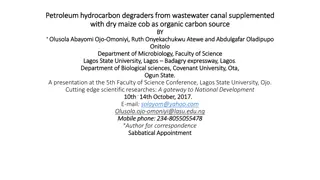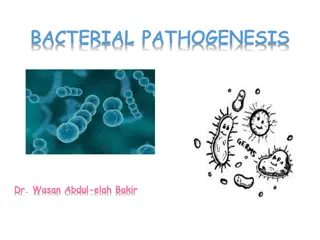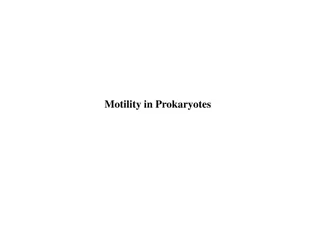pH Effects on Bacterial Growth: The Influence of Environment
This study explores the impact of pH levels on bacterial growth, highlighting the minimum, optimum, and maximum pH requirements for different categories of microbes - acidophiles, neutrophiles, and alkaliphiles. It delves into the consequences of pH variations on cellular processes like DNA stability, lipid hydrolysis, proton motive force, and protein denaturation. Examples of microorganisms thriving in diverse pH environments are discussed, shedding light on their adaptive mechanisms in acidic or alkaline conditions.
Download Presentation

Please find below an Image/Link to download the presentation.
The content on the website is provided AS IS for your information and personal use only. It may not be sold, licensed, or shared on other websites without obtaining consent from the author. Download presentation by click this link. If you encounter any issues during the download, it is possible that the publisher has removed the file from their server.
E N D
Presentation Transcript
Effect of Environment on Bacterial growth (pH) (For B. Sc. II semester) Dr Deepak V. Vedpathak Associate Professor, Department of Microbiology. Rajarshi Shahu Mahavidyalaya (Autonomous), Latur (MS) Dr DVV, LTR/2020
LEARNING OBJECTIVES Illustrate and briefly describe minimum, optimum, and maximum pH requirements for growth Identify and describe the different categories of microbes with pH requirements for growth: acidophiles, neutrophiles, and alkaliphiles Give examples of microorganisms for each category of pH requirement Dr DVV, LTR/2020
The hydrogen bonds holding together strands of DNA break up at high pH. Lipids are hydrolyzed by an extremely basic pH. The proton motive force responsible for production of ATP in cellular respiration depends on the concentration gradient of H+across the plasma membrane. If H+ions are neutralized by hydroxide ions, the concentration gradient collapses and weaken energy production. Moderate changes in pH modify the ionization of amino- acid functional groups and disrupt hydrogen bonding in proteins (enzymes) which is responsible for changes in the folding of the molecule promoting denaturation and destroying its activity. Dr DVV, LTR/2020
The optimum growth pH is the most favorable pH for the growth of an organism. The minimum growth pH is the lowest pH value that an organism can tolerate The maximum growth pH is the highest pH at which organism can grow These values can cover a wide range For example, the optimum growth pH of Salmonella spp. is 7.0 7.5, but the minimum growth pH is closer to 4.2. Dr DVV, LTR/2020
Classification of microorganisms on the basis of optimum pH for growth Neutrophiles: Grow optimally at a pH within one or two pH units of the neutral pH of 7 (5.5 to 8.5) Escherichia coli, staphylococci spp. Salmonella spp. Azotobacter spp., Rhizobium spp. Pseudomonas spp etc. Fungi thrive at slightly acidic pH values of 5.0 6.0 Dr DVV, LTR/2020
Acidophiles: grow optimally at pH less than 5.55 sulfur-oxidizing archaeal Sulfolobus spp. (2.5 3.5) archaeal Ferroplasma spp.,Thiooxidansspp. live in acid mine drainage at pH values of 0 to 2.9, Lactobacillus spp.(3.5 6.8) Acidophilic microorganisms display a number of adaptations to survive in strong acidic environments. For example, proteins show increased negative surface charge that stabilizes them at low pH. Pumps actively eject H+ions out of the cells. The changes in the composition of membrane phospholipids probably reflect the need to maintain membrane fluidity at low pH. Dr DVV, LTR/2020
Alkalophiles: Grow best at pH between 8.0 and 10.5. Vibrio cholerae, Bacillus pasteurii (urobacillus),The bright pink archaean Natronobacterium, found in the soda lakes of the African Rift Valley, grow at a pH of 10.5. Many bacterial isolates have also isolated and characterized from crater lake of Lonar( Maharashtra, India) Extreme alkaliphiles have adapted to their harsh environment through evolutionary modification of lipid and protein structure and compensatory mechanisms to maintain the proton motive force in an alkaline environment. For example, the alkaliphile Bacillus firmus derives the energy for transport reactions and motility from a Na+ion gradient rather than a proton motive force. Many enzymes from alkaliphiles have a higher isoelectric point, due to an increase in the number of basic amino acids, than homologous enzymes from neutrophiles Dr DVV, LTR/2020
Thank You Dr DVV, LTR/2020

















































